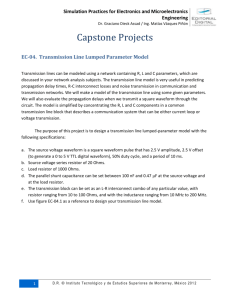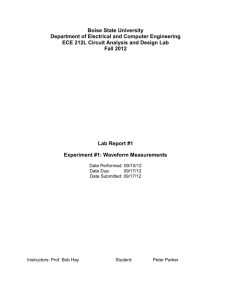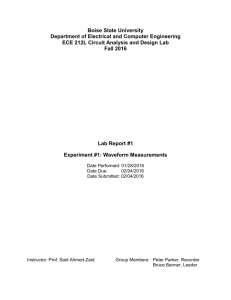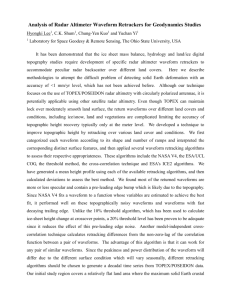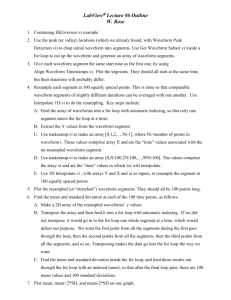Signals and Spectra
advertisement
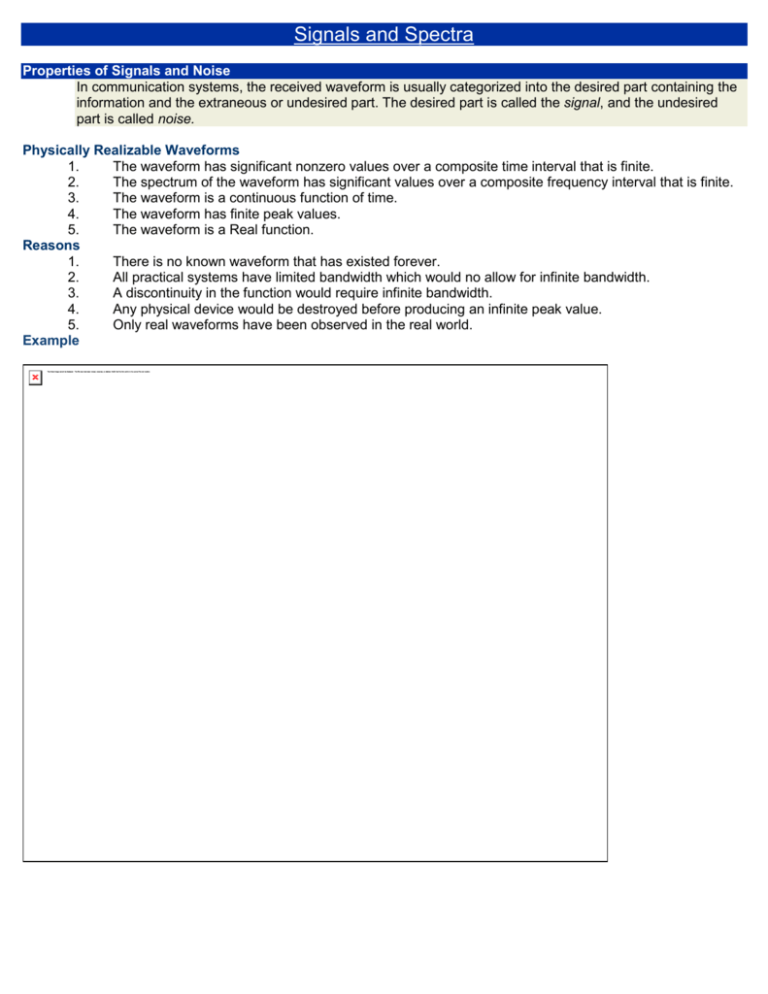
Signals and Spectra Properties of Signals and Noise In communication systems, the received waveform is usually categorized into the desired part containing the information and the extraneous or undesired part. The desired part is called the signal, and the undesired part is called noise. Physically Realizable Waveforms 1. The waveform has significant nonzero values over a composite time interval that is finite. 2. The spectrum of the waveform has significant values over a composite frequency interval that is finite. 3. The waveform is a continuous function of time. 4. The waveform has finite peak values. 5. The waveform is a Real function. Reasons 1. There is no known waveform that has existed forever. 2. All practical systems have limited bandwidth which would no allow for infinite bandwidth. 3. A discontinuity in the function would require infinite bandwidth. 4. Any physical device would be destroyed before producing an infinite peak value. 5. Only real waveforms have been observed in the real world. Example Important Properties and Definitions Time Average Operator One operator is linear if: Periodic Waveform for all t. is the smallest positive number that satisfies this relationship. Physical waveforms can not be truly periodic. If the waveform is periodic the time average operator can be reduced to Dc value The dc value of a waveform is given by its time average. The expression has to be modified to the interval of interest. Power In communication systems, if the received (average) signal power is sufficiently large compared to the average noise power, information may be recovered. Consequently, average power is an important concept that needs to be exactly understood. From circuit theory, the instantaneous power is: p(t ) v(t )i (t ) Power And the average power is: p(t ) v(t )i(t ) RMS Value and Normalized Power Definition. Wrms w2 (t ) In electric circuits, for sine waves, when voltage and current are in phase, Vrms V / 2 ; I rms I / 2 P v 2 (t ) R V 2 rms R P I 2 rms R Vrms I rms Normalized power, R 1 . P w 2 (t ) Where w(t ) could be voltage or current. Example A 120 V, 60 HZ fluorescent lamp has unity power factor. Find the DC voltage, the instantaneous power and the average power. Energy and Power Waveforms w(t ) is a power waveform if the normalized average power P is finite and nonzero. w(t ) is an energy waveform if the normalized energy E is finite and nonzero. Decibel This can also be expressed in terms of voltage or current. If input and load resistances have the same value, or if this fact is disregarded, The decibel signal-to-noise ratio Other Decibel Meassures Pin 1 mW 1W 1 kW dB dBm dBW dBk Vector Space A vector space V is a set that is closed under finite vector addition and scalar multiplication. The basic example is ndimensional Euclidean space , where every element is represented by a list of n real numbers, scalars are real numbers, addition is componentwise, and scalar multiplication is multiplication on each term separately. Basis A basis of a vector space V is defined as a subset space span V. Consequently, if every of vectors in V that are linearly independent and vector is a list of vectors in V, then these vectors form a basis if and only if can be uniquely written as where , ..., are elements of or . A vector space V will have many different bases, but there are always the same number of basis vectors in each of them. The number of basis vectors in V is called the dimension of V. Every spanning list in a vector space can be reduced to a basis of the vector space. The span of subspace generated by vectors and is Complete Basis A set of orthogonal functions is termed complete in the closed interval continuous function f(x) in the interval, the minimum square error if, for every piecewise (where denotes the L2-norm with respect to a weighting function w(x)) converges to zero as n becomes infinite. Symbolically, a set of functions is complete if where the above integral is a Lebesgue integral. Examples of complete orthogonal systems include over (which actually form a slightly more special type of system known as a complete biorthogonal system Orthogonal Series Representation of Signals and Noise Orthogonal Functions Coefficients Complex Fourier Series Complex Fourier Series Quadrature Fourier Series Polar Fourier Series


